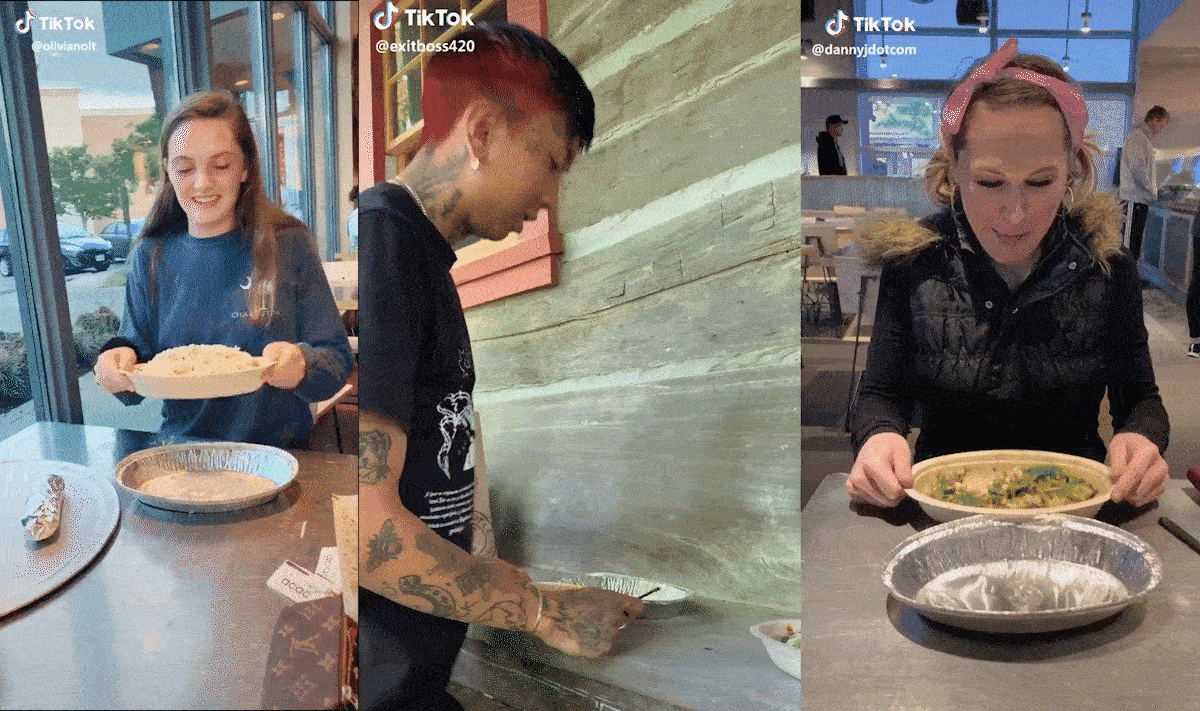When my preteen isn’t practicing dances or trying new crafts and recipes, she’s recording herself doing something like disappearing out of a hoody. That’s one glimpse into the world of TikTok, the top downloaded app in May.
In 2019, only 9% of internet users in the country said they’d used TikTok but that jumped to 49% for teens. Ranking third favorite among U.S. teens, this reincarnation of lip-syncing channel Musical.ly now features a 25-second video format, with the option of stringing four videos together.
Its popularity among young people reinforces TikTok’s status as a Gen Z app. So how can marketers ride the wave of a platform where some 37% of U.S. users report annual household incomes of $100,000 or more?
TikTok algorithms and starting out
In an April Fast Company webinar, Jacob Pace, 21-year-old CEO of Flighthouse, the most-followed brand on TikTok shed light on how brands that want to reach this audience can go viral on the platform.
“In general and especially right now there's kind of a big opportunity for brands to be creating really viral content on TikTok,” says Pace, whose brand has more than 24 million followers. “Just because of how the algorithm works, low-produced content that’s shot at home can work well for brands.”
TikTok algorithms favor easily produced organic content as compared to those of other social media channels. Basically, Pace explains, if a viewer watches through your whole video it gets recommended to four other users. “Dance videos are massive on TikTok, one reason is people want to learn the dance and so they watch the video multiple times. And that's what continues to recommend it.”
To get started, spend time on TikTok. Tune into trends and get to know the unique sense of humor of its quirky, bite-size videos. Along with entertaining content like comedy skits, dances and challenges, Pace points out another category: informative. He’s seen brands do really well by being a little bit more informative and educational.
He shares an example from a cosmetics company Flighthouse is working with. They’re doing little DIY videos — i.e., “Here's 10 cool ways that you can store your makeup to keep inside of your pocket!” — that are really easy to caption and put text on.
Tips for producing organic content with a native feel
Overproducing your content is not only unnecessary but it can even hurt your brand, notes MJ Widomska, creative director for award-winning London-based agency YRS TRULY. “The beauty of TikTok lies in how DIY everything feels,” she explains. “High production gives brands away, and the aim here is to feel native to the platform.”
To give your content a native feel but stand out from the millions of videos shared on TikTok, Influencer Marketing Hub says to use effects. They’re found under the Effects tab, where they’re divided into Trending, New, Interactive, Editing, Beauty, Funny, World, and Animal categories.
Another person who knows a great deal about TikTok is Forbes Communication Council member Haasib Tariq, who helped fashion brand Guess launch the first U.S. TikTok campaign with #InMyDenim.
“The key to going viral is consistently publishing new content,” he says. “Marketers can build their brand by consistently publishing new, edgy, fun and creative content at the same time every day.”
Authentic marketing with micro influencers
Recognition is an important factor in making TikTok content go viral, explains Pace, that’s why influencer marketing is big on the platform.
One way to work with an influencer is by paying that person to promote your product with an idea you think will do really well on TikTok, he says. A second, perhaps better strategy is trusting a creator to develop the best approach. He’s seen brands have great success in campaigns where they say something like, “Hey, this is our product. This is the message we want to get across. How do we most authentically communicate to your audience?”
“It’s their audience at the end of the day, and they're going to know what comes most authentic to them,” emphasizes Pace.
Here, less is more. Research indicates that micro-influencers, those with less than 250,000 followers, were more likely to motivate young fans to try a recommendation than celebrities or the brand itself.
Ads and #Hashtag challenges on TikTok
Tariq reports that he’s often found engagement on TikTok higher than other social channels he’s created ads on.
Along with conventional in-feed ads, TikTok offers brand takeovers, a full-screen ad that users will see when they first open the app. Yet best known are hashtag challenges which can be organic and/or promoted on the explore page.
Another early adopter like Guess and one of the most prominent brands on TikTok is Mexican fast food chain Chipotle. One of its viral campaigns was the #lidflip challenge, where users showcased their skills flipping the lid of a Chipotle box. Since taking part in challenges is not only fun but helps TikTok users grow their following, many flocked to the fast food chain for their own takeout box, noted Widomska.

TikTok’s audience may be young, but that’s all the more reason to do your homework. “I’ve found that while [this demographic] can be heavily influenced by digital media, they’re also not afraid to swipe left if they feel they’re being sold to,” Tariq warns.
If you have teens or preteens, be warned they may get a bit territorial. Mine not only told me it was embarrassing that I was reporting on a platform made for her generation, she wouldn’t let me download TikTok. So before I even consider promoting my brand on TikTok, I’ll definitely heed the following advice from Widomska.
“Enlist a Gen Z consultant, even if it’s someone’s teenage child. They’ll tell you if you’re accidentally participating in an insensitive trend or just being painfully uncool.”

